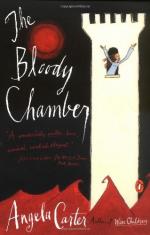|
This section contains 9,840 words (approx. 33 pages at 300 words per page) |

|
SOURCE: Finney, Brian H. “Tall Tales and Brief Lives: Angela Carter's Nights at the Circus.” Journal of Narrative Technique 28, no. 2 (spring 1998): 161-85.
In the following essay, Finney discusses Carter's assertion that Nights at the Circus is about the nature of narrative.
Nights at the Circus (1984), Angela Carter's penultimate novel, epitomizes her wildly inventive, highly idiosyncratic mode of fiction, centered as it is on Fevvers, a Cockney artiste who claims to have grown wings. Most critics and reviewers have seen the main thrust of the novel to reside in the portrayal of Fevvers as a prototype of the New Woman whose wings help her to escape from the nets of a patriarchal nineteenth-century culture into a twentieth-century feminist haven of freedom.1 The novel ends with Fevvers astride her American lover, Walser (she now playing the missionary role), enjoying apparently two triumphs—sexual and psychological—in one: “‘To think I...
|
This section contains 9,840 words (approx. 33 pages at 300 words per page) |

|


